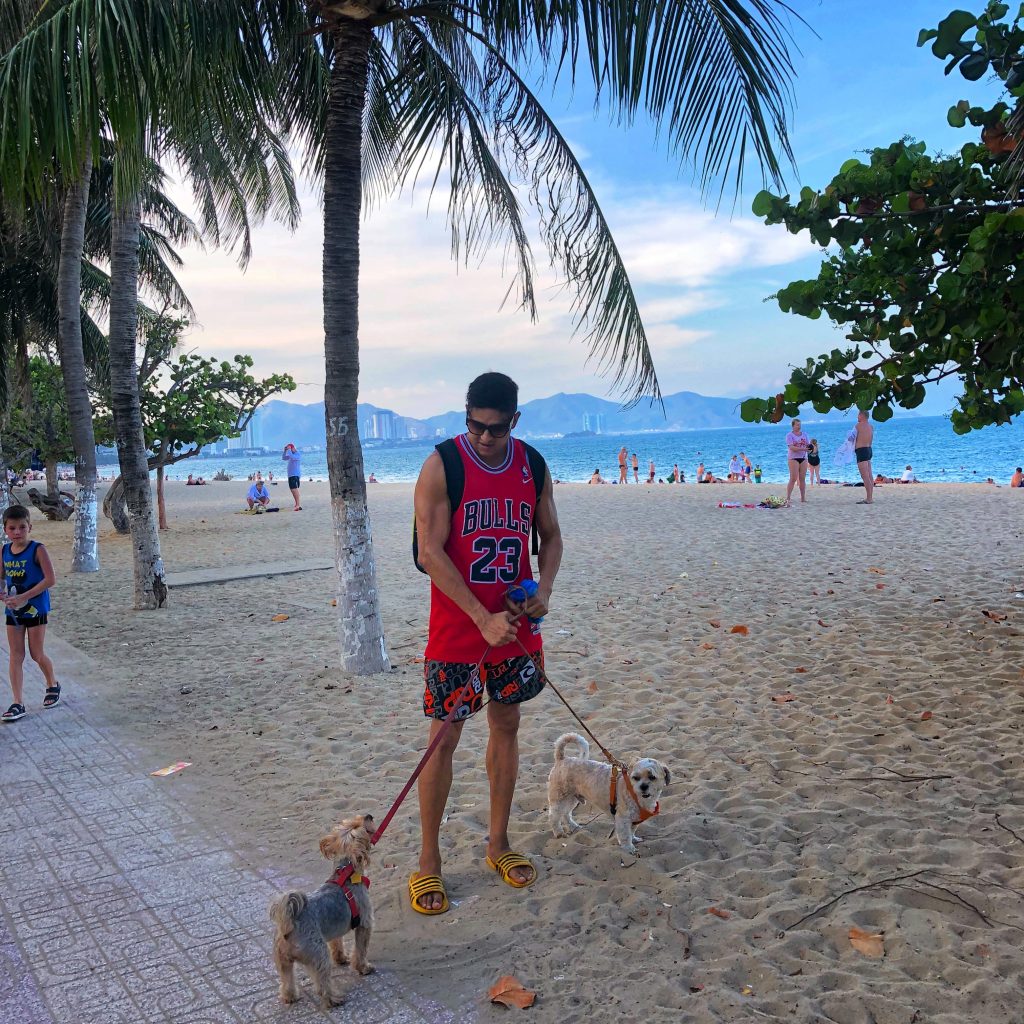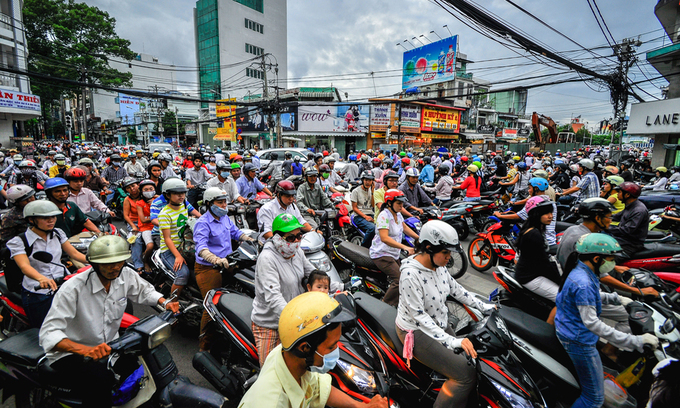I travel the world with my dogs so we’re always adapting to different countries, cultures and local dangers. My dogs have flown over 100 times each, visited more than 10 countries and have seen more of this earth than many humans will. As a results I’ve become an expert in traveling with dogs. I wanted to write a guide for pet owners about how to protect your best friends (especially dogs) if you want to travel with them. These are tips that you should consistently follow regardless of where you’re traveling to.
My dogs are service animals in America which makes traveling with them in cabin and at no cost (on most flights) significantly easier. However, we still have to adhere to the same import rules as any other pet would and once we land internationally, many countries don’t acknowledge service animals. I include ideas below about how you can navigate the complicated world of air travel with pets as well as importing animals into foreign countries and avoiding any problems. Feel free to reach out directly to me with any questions!
-
Make sure your pets have all the necessary vaccines and hold onto the paperwork
If you’re a global citizen, you will likely end up using many different vets around the world. I have vets in New York City, New Jersey and Los Angeles. Because a universal veterinary platform doesn’t exist, you’ll need to send your different vets their vaccine histories and the easiest way to do it is to hold onto copies of all documents received . I have an entire folder with health certificates and documents for Mexico, Philippines, Thailand, Vietnam, America etc. This will not only save you a headache, but it will help you keep track of what your dogs need or don’t need.
-
Know what animals or insects you should watch out for in foreign countries

I had no idea that Thailand was home to one of the scariest insects in the world – the monster poisonous centipede (official name scolopendra subspinipes) with venom strong enough to kill a human. If it can kill a person, imagine what it can do a dog! I personally have never come across this monster, but I am always keeping an eye out after it rains as they prefer moist, damp conditions. These creatures have been known to hide inside of sneakers which is why I tend to wear flip fops in Thailand.
-
Understand the local attitude and culture towards pets

Nha Trang, beautiful beach in Vietnam! Some countries are friendlier to dogs than others. In countries like Mexico, Thailand and Bahamas, my dogs were almost always welcomed with smiles and open arms. However, I have read some horror stories about pet ownership in countries like mainland China and Vietnam. Now, I’ve been all over Vietnam with my dogs (Nha Trang, Phu Quoc, Saigon) and I never had any issues, but you should never let your guard down. Of course my dogs were always on their leash and they never left my sight.
Remember, some cities in China and Vietnam continue to eat cats and dogs. Just as recently as September 2018 the Mayor of Hanoi pleaded with the city to stop eating dog meat due to rabies risk (but also because it was turning away tourists). My American friend Emily walked down the wrong alley and saw dog meat. It left her shaking and traumatized.
Hanoi’s vice mayor Nguyen Van Suu also said that slaughtering dogs and cats for their meat was disturbing to foreigners and would “negatively impact the image of a civilized and modern capital.”
And let’s not even talk about the Yulin Dog Meat Festival in China (you can Google this for yourself). How a government allows this sort of public tradition to continue baffles me when it not only has such a negative impact on the attitudes towards an entire country, but the painful death it brings to stray animals and stolen pets.
When you travel, you might come across people who look at all dogs as pests. As a result, do not let your dogs eat anything off the ground as cruel neighbors can hide poison inside of chicken in an attempt to cull the local dog population. Here’s a heartbreaking story of a woman who brought her service dog to China, only for neighbors to kill it with poisoned pieces of chicken. What’s even worse is that there are no animal cruelty laws to protect pets in mainland China.
Another thing to be aware of is dognappers in countries like Vietnam who kidnap your dog for ransom, to sell to a new owner or for food. While rare, I was warned by locals to always keep my eyes on my dogs and my dogs on a leash. I met a few local people who had their pets kidnapped from their yards or homes. Again, I personally did not have any negative dog-related experiences in Vietnam but this stuff does happen.
-
Do not let people give your pets food without inspecting it first

I’ve seen people (especially children) offer my dogs chocolate as they were unaware that chocolate can be poisonous to dogs. I have caught friends feeding my dog avocado slices (which can be toxic) not knowing that avocado can upset their stomachs. Here is a list of common foods that are poisonous to your dog. Many non-pet owners aren’t familiar with this list so just monitor what people are feeding your pets.
-
Keep your pets on a short leash and towards the sidewalk

If you think people drive crazy in America, you haven’t seen anything! Once you get to developing countries, the rules of the road are viewed as mere suggestions (what’s a one way street???) I’ve also seen many people drive drunk without any fear of the law as they know they can just pay the police. Add this to the fact that many times there aren’t even complete sidewalks to walk on. I recommend keeping your pets on a tight leash and walking on the inside of you towards the sidewalk as drivers are more likely to see you than a small animal.
-
Know the import process to avoid quarantine

My dogs were not allowed to leave their bags in Japan. We’ve been to over 10 countries and I’ve been able to avoid having my dogs quarantined. If the import process seems at all complicated, it’s very important – extremely important – to have direct communication with the government of the country that you’re bringing your dogs to. Thailand has a somewhat complicated process so I had to recruit a local Thai person to help me communicate with the Thai Quarantine office. If your dogs appear to be in good health, you’ve received the import permit in advance and you have all of your documents in order, then your pets won’t be quarantined. Miss any of these steps and your pets will have to stay with the government for a few weeks.
Vietnam, Canada, Mexico, Caribbean and Belize are all significantly easier in comparison. However, there are places like Australia, Japan and even Hawaii that are almost impossible to import dogs into. I’ve transited Narita Airport in Japan with my dogs before but importing them is an entirely different beast.
-
Are there street/stray dogs?
In hot countries like Thailand, Belize and Nepal, there are street dogs. Generally I have not had any major issues with street dogs outside of a few minor scares. They’ve chased me a few times while I was on my bicycle with Raindrop in her backpack and Flex in the front basket. The sounds of my bicycle combined with the presence of my dogs likely triggered their territorial instincts. I recommend always keeping an item on you that you can throw in the direction of the dogs to distract them if they’re getting too close. I have found this strategy to be 100% effective. The dogs will run away. Please note that I am NOT suggesting to hit the dogs. I am just suggesting to use something like a water bottle as a distraction.
On the flip side I’ve met a few street dogs that responded to tricks in English! I am guessing they either had owners at one point and were put on the streets after they got too big, became too expensive or outlived their cuteness. This sadly happens more than it should in developing countries. Adopt don’t shop!
-
Avoid having your pets fly in the cargo hold at all costs and communicate with the airlines directly about their policies
Do everything in your power to avoid putting your dog the in the cargo hold of the plane. If you can’t bring your pet onto the plane with you, consider leaving your pet at home with a trusted petsitter. Typically the cargo hold is dark and noisy making it extremely stressful for your pet. Once your pet is out of your possession, you have no control over the situation. Flight delays can easily double the expected length of a trip. There’s also been stories of pets being sent to the wrong city. There is of course always a chance that your pet dies and you typically can’t do anything about it because most airlines make you sign a waiver that releases them from all responsibility. It says something like “I understand and acknowledge that my pet can die and there is nothing I can do about it legally.”
If you’re an American, you can apply for an “Emotional Support Animal” (ESA) letter from legit websites like CertaPet.com and many international airlines will acknowledge it on any flight to/from USA. However, once you land in a different country, most airlines will only acknowledge trained service animals and your pet will have to go into the cargo hold for the second leg. Please note that CertaPet may reject your application if they do not feel you qualify for an ESA.
Airline policies and pet import guidelines vary wildly around the world so make sure you do your research and communicate with the airlines and relevant government agencies as much as possible. When coming to Thailand, I was in constant communication with Philippine Airlines and Thailand Animal Quarantine.
-
Plan at least 2 months in advance

I had a chance to explore Harrisburg, PA while I got my international health certificates endorsed Play it safe and give yourself a lot of extra time. Many countries require that your pets receives the necessary vaccines at least 21 days in advance of your trip. After that, some countries require that you take the international health certificate from your vet and bring it to the local government (in America it’s the USDA) to “endorse” it within 10 days of travel. Basically, this is a second set of eyes to make sure that your paperwork is legit. If you’re American, you can use this link to find the nearest office. I have used the offices in El Segundo, CA and Harrisburg, PA and had very fast and pleasant experiences both times. Please remember to make a reservation in advance!
And remember – some countries even require 6 months of advance planning as you’re required to get specific laboratory tests. I plan to one day live in Japan and I know that their pet import process is rather lengthy.
-
How will the weather impact your pet?

When I first got to Bangkok with my dogs I had no idea how hot and humid the city would be. Turns out Bangkok is considered the hottest city on the planet. After 15 minutes trying to navigate the side streets of Thonglor, I assumed walking down shaded areas would provide enough relief for my dogs. Nope! My dogs were panting and no longer wanted to walk and I quickly realized that the heat was too dangerous. At first I invested in a baby stroller but then I saw a picture of myself and realized how insane I looked so I “upgraded” to backpacks for my dogs. This makes it easier for me to carry them and keep my hands free and when necessary, I can sneak them in places.
-
Is the water safe to drink?
If you wouldn’t drink the tap water, why should your dog? We’ve all heard of Montezuma’s revenge. If you’re drinking bottled water, do your fur baby a solid and give them bottled water too. In the US my dogs exclusively drink alkaline water and it’s made a noticeable improvement on their health (Flex got fewer ear infections and Raindrop’s coat seemed shinier).
-
Find out where the local vets are

Hopefully you won’t have any emergencies but it’s a good idea to know in advance where the local vets are should any problems arise. I was in Phu Quoc, Vietnam and Flex had developed a mysterious scab on his back. I found the one vet on the entire island which was fortunately close to where I was staying. The good news was the vet had antibiotics and that the total cost was 50k dong ($2.50 USD). The bad news was that the office was essentially a backyard.
-
Develop a support system of petsitters
It’s good to have some options on who you can trust to leave your dogs with if necessary. Before I knew anyone in Bangkok, I used Pet Hotel Bangkok on my first visa run to Vietnam. Another option is to network with other pet owners. I recommend using Facebook groups which have been one of the best resources. For examples, in Bangkok there’s the “Bangkok Pet Lovers” group. In Hua Hin, there’s a “Pets of Hua Hin.” Shoutout to my peeps there! Any city you visit in the world will have a built-in support system through Facebook groups. -
Book pet-friendly hotels that you can trust

Sometimes you need to leave your dog in the hotel while you run a few errands or if you want to hit up the clubs. Make sure that the hotel has good reviews from other pet owners. You can read about some of the hotels I have trusted in Bangkok, Hua Hin & Chiang Mai. This list will constantly be updated as I travel. Some hotels I’ve stayed at have other pets that live on premise that give me an extra degree of comfort.
-
Give your pets flea and tick prevention
While I don’t think flea and tick prevention can protect your dog against the giant poisonous centipedes mentioned above, there are a lot of nasty insects around the world, so it’s a good idea to give your dogs some protection against them.
-
Get medical insurance for your pet
I strongly encourage everyone to have medical insurance for their pet to protect them from any unexpected emergencies, accidents or illnesses. My dogs are proudly protected by Trupanion. Only 2% of pet owners in America have pet insurance for their pets which makes absolutely no sense to me because I am sure more than 2% of owners love their fur babies! I’ve heard of too many horror stories where the vet bills quickly skyrocketed to $25,000 and owners had to choose between their pet and money. That’s a decision nobody should have to make. Check out Trupanion and if you sign up, please use this link as it supports my blog.
We hope that you found this guide helpful! I think it’s a good overview for the first time pet traveler. Keep your pets protected and remember…

***
Do you have any other tips to keep your pets protected while traveling?
Leave a comment or you can e-mail me adam@befreemysheeple.com. If you enjoyed reading/watching this, you can follow me on Instagram, @adamfrancisco & @befreemysheeple.
Be Free My Sheeple!





